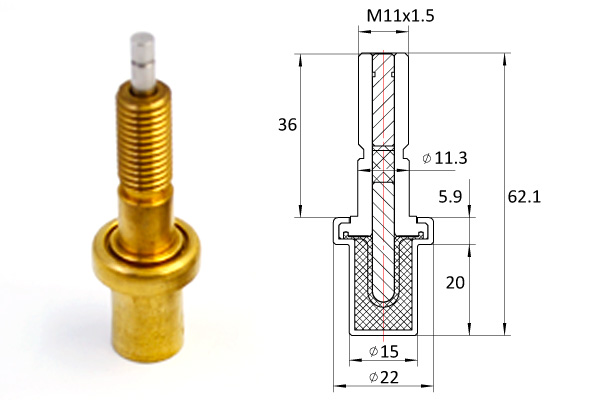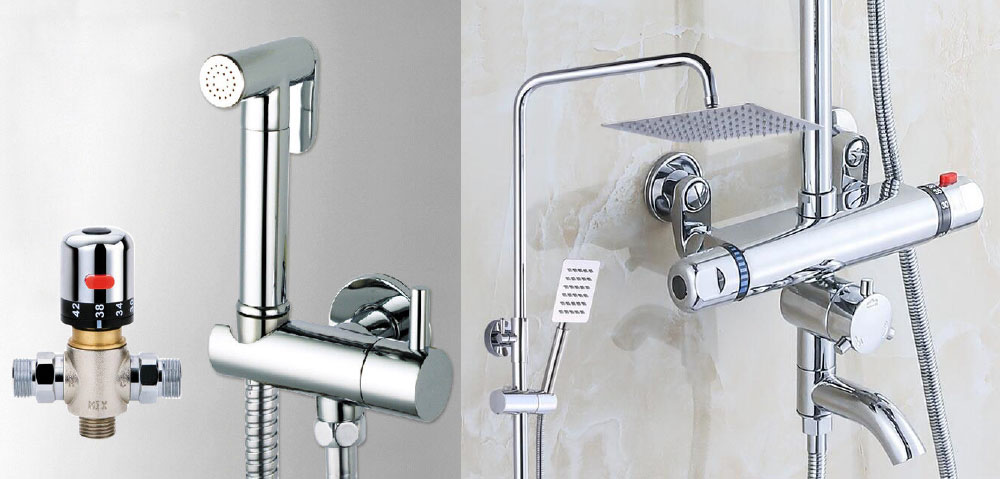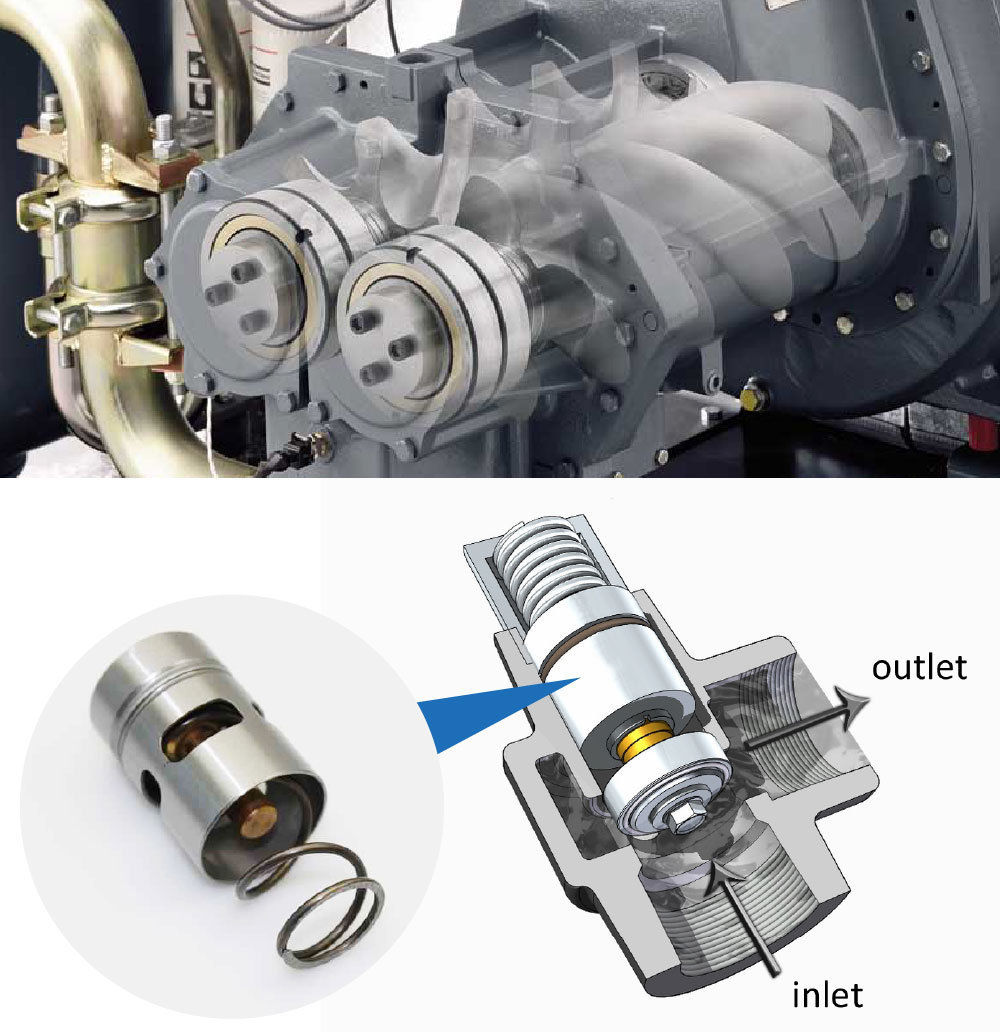The heat dissipation performance of Insulated Gate Bipolar Transistor (IGBT) has become an important factor affecting the safety, reliability and power performance of electric motors and even electric vehicles.A new structure scheme of air-cooled radiator for IGBT motor controller of pure electric vehicle is proposed. A black-box simulation model is established for IGBT heat source and new air-cooled radiator designed. The IGBT junction temperature under rated working conditions is estimated theoretically. Then the temperature field and flow field of IGBT chip junction temperature and radiator are simulated visually by using fluid simulation software.At the same time, the junction temperature of IGBT chip is measured by experiment, and compared with the results of thermal simulation and theoretical estimation, it is verified that the new air-cooled radiator can meet the thermal design requirements of IGBT working normally.In electric vehicles, the function of IGBT radiator of motor controller is to ensure that the electric drive system can work normally, reliably and steadily at the most suitable temperature in any load condition and working environment. It is an important factor affecting the safety, reliability and dynamic performance of the electric drive system and the whole electric vehicle.In recent years, the thermal power consumption of IGBT is increasing continuously. In order to ensure the normal operation of IGBT in motor controller, the maximum junction temperature of IGBT can not exceed 125 C, and the temperature of radiator substrate should be controlled below 85 C.Therefore, the radiator heat dissipation performance has become a key issue in motor controller design [5-8].The thermal environment in the motor controller is very complex. Besides the theoretical estimation and experimental research based on experience, it also needs the help of mature computational fluid dynamics (CFD) technology to improve the accurate evaluation and analysis of the thermal characteristics of the motor controller.
The CFD simulation and theoretical calculation are integrated into the design of the whole structure, and the internal thermal environment is reasonably optimized and improved, so as to improve its reliability, obtain a reasonable thermal management scheme, and shorten the development time of the product [9].In view of the complexity of IGBT’s structure and material, most references [10-11] ignore the high-temperature nodes of IGBT and assume that IGBT is a flat heat source with uniform distribution for thermal simulation analysis.In reference [10], a set of database of radiator thermal resistance was obtained by replacing heat source with uniform heating block of the same size as IGBT.Reference [11] also assumes that IGBT is a uniformly distributed heat source, and that the heat loss of IGBT is uniformly distributed on the substrate. Finally, the temperature rise of power devices is estimated by calculating the surface temperature rise of water-cooled radiators.Based on the fact that the current conventional air-cooled radiator can not meet the heat dissipation requirements of IGBT for electric vehicle motor controller, this paper proposes a new air-cooled radiator structure scheme.According to the actual power consumption of IGBT chips, the junction temperature of IGBT is estimated theoretically by calculating the thermal power consumption of each heat source node, and the IGBT multi-point heat source and radiator are modeled and simulated by the fluid thermal simulation software. The temperature distribution and flow field distribution of IGBT high temperature node and the new air-cooled radiator designed are obtained. At the same time, the experimental measurements are carried out to verify the dispersion of the new air-cooled radiator. Thermal performance.The new air-cooled radiator structure of motor controller presented in this paper is shown in Fig. 1. The outer dimension is 230 mm x 240 mm x 100 mm, the thickness of substrate is 14 mm, the thickness of fins is 3 mm, and the height is 86 mm. There are 50 small fins symmetrically distributed on both sides of each fin, the thickness is 0.
5 mm and the height is 1.5 mm.Fig. 2 is a three-dimensional simulation model after removing the louvers.The radiator enlarges the convective heat transfer area between the radiator and the outside world by arranging small fins densely, so as to improve the radiation effect of the radiator.The convective heat transfer area can reach 2.67 m2, and the heat transfer area of the traditional finless radiator with the same size is about 1.01 m2. Therefore, the heat transfer resistance between the radiator and the external environment can be greatly reduced.In this paper, the IGBT heat source of motor controller is composed of three IGBT modules.

A complete IGBT module includes four IGBTs and four continuous-current diodes. However, most of the power losses are generated on the IGBT in the actual working process, while the continuous-current diode bears a lower load, so the power losses of the continuous-current diode can be ignored here, and all the heat can be regarded as IGBT generation.According to the relevant parameters given by the manufacturer, the thermal power consumption of each IGBT heat source under rated conditions is calculated to be 54.2 W by linear approximation method.In the process of heat transfer, the heat is produced by IGBT module, which passes through the packaging layer to the heat dissipation substrate, and eventually transfers to the heat dissipation fins for convective heat transfer with the outside world. The specific heat transfer model is shown in Fig. 3.
The upper side of the IGBT module is coated with silicon gel with poor thermal conductivity (thermal conductivity of 0.15 W/ (M. C)). It is considered that the heat of the IGBT chip is mainly transferred to the radiator through the lower packaging material and substrate.Because there are many kinds of materials and welding layers in the packaging layer (including thermal conductive silicone layer), the thickness data of each layer are inaccurate, which makes the theoretical calculation of thermal conductivity of the packaging layer difficult.In order to facilitate CFD simulation analysis, the encapsulation layer between IGBT module and radiator substrate is simplified as a solid block of a material whose thermal properties are unknown, which can be regarded as a black box model.The heat generated by IGBT chips is mainly transmitted to the radiator by heat conduction through the substrate, and then exchanged with the outside environment by forced air cooling.Thermal resistance can be divided into three parts in the whole process of heat conduction: IGBT shell thermal resistance, namely Rjc from IGBT crystal to radiator substrate (which has been simplified as black box); solid heat transfer thermal resistance Rch in radiator; and heat transfer thermal resistance Rha [12] between radiator and external environment; R, Rjc, Rch, Rha units are all (?) C/W.。。In the formula, D is the thickness of the black box, m; K is its thermal conductivity, K = 26 W/(m C); A is the heat transfer cross section area of the black box.。In the formula, L is the height of the radiator, m; Ks is the thermal conductivity of the radiator material, where is 209 W/(m C); L is the length of the fin, m; B is the thickness of the fin, m; n is the number of fins.。In the model, h is the thickness of the base plate, m; A is the effective heat dissipation area of the radiator, m2; Pv is the heating power of IGBT rated condition, W; C1 is the state coefficient of the radiator installation, thermostatic element so C1 = 0.4; C2 is the relative thermal resistance coefficient of the radiator under the condition of forced air cooling heat dissipation, C2 = 0.4 according to the selected fan flow rate; C3 is the air heat transfer coefficient, because the turbulence of air flow field is the main factor, so C3 = 0.1.4.According to the calculation method of IGBT junction temperature Tj, the whole heat dissipation system can be simplified and equivalent to the calculation circuit model [13-14] shown in Fig. 4.
Among them, Pv is the total heat dissipation power of IGBT under rated working conditions; Ta is the ambient temperature of the whole system (20 C); Th is the average temperature of the radiator, (?) and Tc is the substrate temperature, (?)。Tj = 20 650.4 0.1124 10 103.15.The temperature value is less than the maximum junction temperature allowed by IGBT, which is 125 C. Theoretical analysis shows that the radiator fully meets the heat dissipation requirements of IGBT, and further CFD simulation and experimental verification are carried out.CFD fluid heat transfer simulation is based on physical conservation law, including mass conservation law, momentum conservation law and energy conservation law [15-17]. The corresponding mathematical model equation is described below.。。。In the formula, fluid density, kg/m3; P is dynamic pressure, Pa; t is time, s; u, V and W are velocity components of fluid in the direction of X, Y and Z; and the viscous force per unit mass fluid in the direction of X, Y and Z is expressed.。。In the formula, U is the velocity of the fluid, m/s; Z is the height based on a reference plane, m; for the mechanical energy loss of the unit gravity fluid flowing through the cross-section before and after, J; dQ is the unit volume flow, m 3/s; G is the gravity acceleration, m/s 2.According to the three-dimensional geometric model of IGBT radiator of motor controller, the model is divided into multi-level grids. Because of the large number of radiator fins, in order to avoid the excessive number of grids and increase the calculation cost, and to ensure the calculation accuracy as far as possible, discontinuous grids can be divided into the model. The grids are relatively dense in the places where the fins are concentrated and the flow parameters change greatly [18], so that each small one can be guaranteed. There are two to three grids in the direction of fin thickness.The discontinuous grids are divided into multi-level grids at the interface, and the grids at the boundary show a process from dense to sparse, which can capture the gradient of variables well.The total number of partitioned grids is about 1.1 million. The results of partitioning and the enlarged local grids are shown in Fig. 5 and Fig. 6.In the process of thermal simulation, the steady-state simulation analysis of the thermal conductivity of the black box layer can be carried out by approximation test algorithm in a certain range. At the same time, the final stable temperature of the temperature measurement point in Figure 7 under the same working condition can be measured by experiment. The difference between the simulation results and the experimental results can be compared to find the appropriate thermal conductivity of the black box.The temperature rise test conducted in this paper studies the position of air-cooled radiator in the motor controller box as shown in Fig. 8.The test-bed is composed of computer, power supply and control system, sensor and signal conditioning module, data acquisition hardware and software, numerical operation processing software, graphics display and operation software, etc.Under different working conditions of the motor controller IGBT, the temperature near the heat source of IGBT module is measured by NTC thermistor of IGBT itself, and the temperature changes at each time are recorded after the IGBT module works until the temperature reaches a steady state.IGBT manufacturers provide a total of 6 internal temperature measurement points.

During the test process, the highest temperature measurement points are shown in figure 7, which are 13 mm apart from the Y direction and 3 mm apart from the Z direction of IGBT middle position chip.Due to the distance between the test measurement point and the actual IGBT chip node, the test data provided by IGBT manufacturers indicate that the measured value is lower than the actual junction temperature of about 10 C, that is, the measured value plus 10 C, which can be considered as the nearest chip junction temperature.In the test, 117 CFM and 70 CFM axial flow fans with two different flow rates were selected.
The temperature readings of the measured points are shown in Table 1.In the thermal simulation of the radiator, by changing the thermal conductivity of the black box layer, the change trend of the junction temperature of the measuring point chip with the thermal conductivity of the black box is shown in Fig. 9.Comparing the simulation results with the experimental results, the simulation results show that when the thermal conductivity is 26 W/(m C), the corresponding IGBT chip stability temperature is 103.6 C when the fan flow is 117 CFM and 105.8 when 70 CFM. Because the temperature reading of the test point needs 10 C to be considered as the chip junction temperature, the temperature reading of the test point in Table 1 is added 10 C, that is 104.8 and 107 respectively. The errors between the measured values and the measured values are 1.2 C and 1.7 C, respectively.Thereby, the thermal conductivity of the IGBT packaging layer is 26 W/(m C).Before simulating the thermal characteristics of the new radiator, it is necessary to optimize the parameters of the fan.In this paper, two parallel fans of the same type are selected, and the parametric CFD simulation calculation is carried out by choosing different air flow rates.
The highest temperature of IGBT chip is observed under different flow rates, as shown in Figure 10.As shown in Fig. 10, with the increase of fan flow rate, the maximum temperature of IGBT decreases. When the flow rate exceeds 0.035 m3/s, the temperature of heat source can basically fall below 110 C. According to the normal operation requirements of motor controller IGBT and the design of fan, the flow rate of axial flow fan is finally selected as L=81CFM=0.038 23 m3/s.The radiator is forced air-cooled, the ambient air temperature is set to 20 C, the radiator model material is aluminium alloy, the thermal conductivity coefficient is 209 W/(m C), the density is 2 710 kg/m3; the thermal power consumption of each IGBT heat source is 54.2 W under rated working conditions; the thermal conductivity of black box is 26 W/(m C); the flow rate of fan is 0.038 23 m3/s.When the motor controller IGBT works at rated heat dissipation power, the steady-state results are obtained by simulation, as shown in figs. 11-14.From Fig. 11, it can be seen that the maximum temperature of IGBT heat source is 110.520 C at rated heat dissipation power, which is lower than the maximum junction temperature allowed at 125 C and meets the requirements of its normal working temperature conditions.Fig. 12 and Fig.
13 are the velocity field in the horizontal section of the radiator and the temperature distribution on the surface of the radiator substrate. It can be seen that the flow field distribution is more uniform. The maximum temperature on the surface of the radiator substrate is 68.661 C, which can meet the requirements of the maximum temperature of the substrate not exceeding 85 C.The maximum temperature difference between the relative concentration area of heat source and other areas is about 35 C.At the same time, the temperature distribution of a single fin located in the middle of the radiator is intercepted (Fig. 14). The maximum temperature on the fin of the radiator is 58.260 C and the maximum temperature difference is about 21 C.In order to obtain the temperature change of IGBT chip heat source and radiator with time, the transient simulation of the radiator under rated conditions is carried out. The temperature change trend of IGBT chip with time in 300 s obtained by time step 1 s is shown in Fig. 15.Under rated operating conditions, the temperature of IGBT chip increases linearly within 200 seconds after starting operation, and tends to be stable around 200 seconds, finally reaching 110.520 C. At the same time, it can be seen that the temperature rise of IGBT chip is relatively stable in the first 300 seconds.The measured temperature of IGBT points at different time points is shown in the experimental result curve in Fig. 14.
It can be seen that the temperature change curve at different time is basically consistent with the trend of simulation.

The temperature of IGBT chip measurement point gradually stabilizes after 200 s, and the stable temperature value is 96.5 C. Additionally, the temperature difference caused by the distance between measurement point and corresponding chip is 10 C. It can be concluded that the temperature of IGBT chip junction obtained by experiment is 106.5 C, which is 3.8% different from the simulation result.A new type of air-cooled radiator for IGBT motor controller of electric vehicle is presented in this paper. A black box model of IGBT heat source and the new type of air-cooled radiator designed are established. The thermal parameters of the IGBT packaging layer are obtained by comparing the simulation results with the experimental results.

Thereby, the CFD thermal simulation of the new type of air-cooled radiator is carried out, and the more reliable fluid and temperature fields are obtained. At the same time, the simulation results are calculated theoretically and verified experimentally, and the following conclusions can be obtained.The new air-cooled radiator designed can ensure that the junction temperature of heat source is below 125 C, and the temperature of radiator base plate is below 85 C, which shows that the radiator meets the normal working requirements of IGBT.Under rated conditions, the maximum temperature of IGBT heat source obtained by simulation is higher than that of theoretical calculation by 7 C, 4 higher than that of actual test, and the errors are 6.
8% and 3.8% respectively, which are acceptable.According to the working condition of the new air-cooled radiator, the heat dissipation effect of IGBT still has much room for improvement.In order to further improve its working stability, we can optimize its parameters in later work, such as trying to change the thickness of the substrate, fin thickness, clearance and number, combining with product size, cost, technical indicators and other factors, to optimize the structure of the radiator.
